A Life On Our Planet
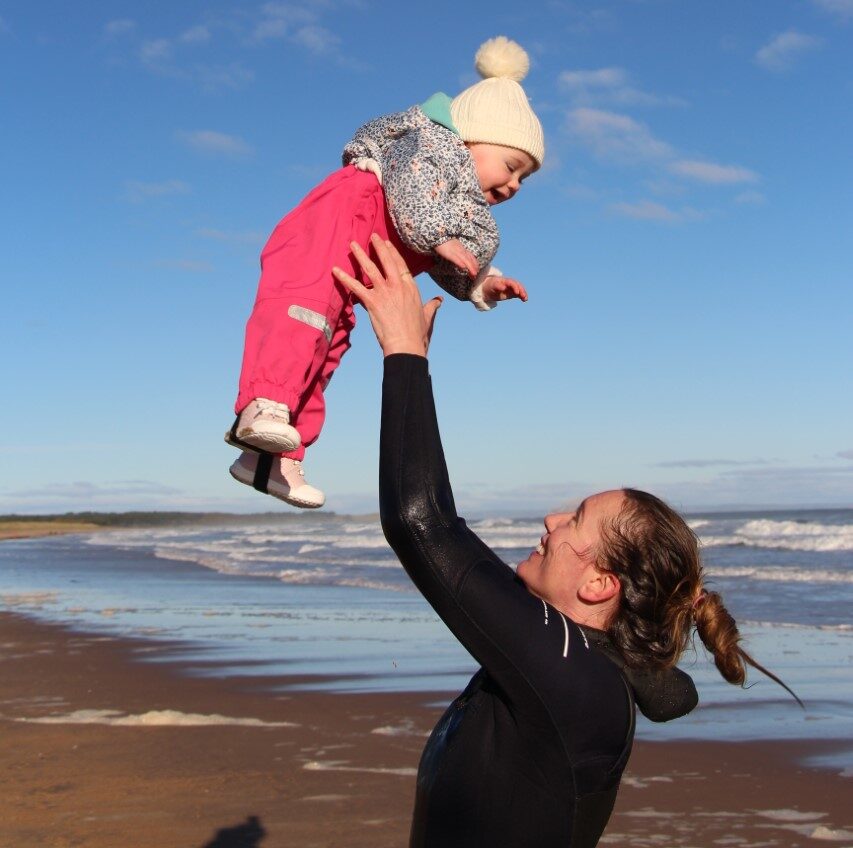
[vc_row type=”in_container” full_screen_row_position=”middle” scene_position=”center” text_color=”dark” text_align=”left” overlay_strength=”0.3″ shape_divider_position=”bottom” bg_image_animation=”none”][vc_column column_padding=”no-extra-padding” column_padding_position=”all” background_color_opacity=”1″ background_hover_color_opacity=”1″ column_link_target=”_self” column_shadow=”none” column_border_radius=”none” width=”1/1″ tablet_width_inherit=”default” tablet_text_alignment=”default” phone_text_alignment=”default” column_border_width=”none” column_border_style=”solid” bg_image_animation=”none”][vc_column_text]“I’ve had an extraordinary life. It’s only now that I appreciate how extraordinary. As a young man, I felt I was out there in the wild, experiencing the untouched natural world – but it was an illusion. The tragedy of our time has been happening all around us, barely noticeable from day to day – the loss of our planet’s wild places, its biodiversity. I have been witness to this decline. A Life on Our Planet is my witness statement, and my vision for the future. It is the story of how we came to make this, our greatest mistake – and how, if we act now, we can yet put it right. We have one final chance to create the perfect home for ourselves and restore the wonderful world we inherited. All we need is the will do so.” -Sir David Attenborough I imagine that by now a fair few of you reading this blog will have seen (or read) A Life On Our Planet; the‘ Witness Statement’ of Sir David Attenborough. If you haven’t, then I would absolutely encourage you to watch it. In fact do that NOW, you can come back to this blog later… If you were feeling anything like me, I was struggling to bring myself to watch the film. Against the background of COVID-19, the perpetual isolation from family and friends, the chronic lack of sleep from my early days of parenting and the harrowing reports I read daily relating to the triple crises of climate, biodiversity and pollution then quite frankly I felt I just didn’t have it in me to sit through some beautifully shot sequences of humanity trashing the planet! But I did sit down to watch it… and I am so very glad I did. Did I sit through a horror show? Well yes… But did it depress me? Well no… If anything the last 30 minutes of the film re-energised me. I needed a ‘pick me up’ and this film was it. If you are reading this blog, then chances are you already know that there has never been a more urgent need to restore damaged ecosystems than now, and I’m not just talking about seagrass ecosystems, but ALL ecosystems. It’s time to revive our planet. #Generation Restoration So here’s my CALL TO ACTION, head over to UNEP’s website NOW and join the #GenerationRestorationmovement today. There has never been a more urgent need to restore damaged ecosystems than now. Ecosystems support all life on Earth. The healthier our ecosystems are, the healthier the planet – and its people. The UN Decade on Ecosystem Restoration aims to prevent, halt and reverse the degradation of ecosystems on every continent and in every ocean. It can help to end poverty, combat climate change and prevent a mass extinction. However, the decade will only succeed if everyone plays a part. So join the movement today! 30km2 by 2030 As a team of interdisciplinary scientists, the work of Project Seagrass crosses the boundaries of both environmental conservation and social action. For seven years we have worked on the ground with coastal communities, both in the UK and internationally. If the last seven years has taught us anything at Project Seagrass, it’s that achieving our mission begins with how we build our team and how we work together. And now we need to work together more than ever: “At Project Seagrass, we are aiming to restore 30km2 of seagrass across the UK by 2030.” Whether you call it ‘rewilding’ or ‘restoration ecology’ the end point is the same. We need to put habitat back and quickly. Or as sir David said: “We have one final chance to create the perfect home for ourselves and restore the wonderful world we inherited. All we need is the will do so.” So to both UNEP and Sir David please know we are ‘all in’ with #GenerationRestoration, and after watching A Life On Our Planet, I am sure you will be too. Stay safe x RJ[/vc_column_text][/vc_column][/vc_row]
The role of seagrass meadows in promoting Ocean Literacy
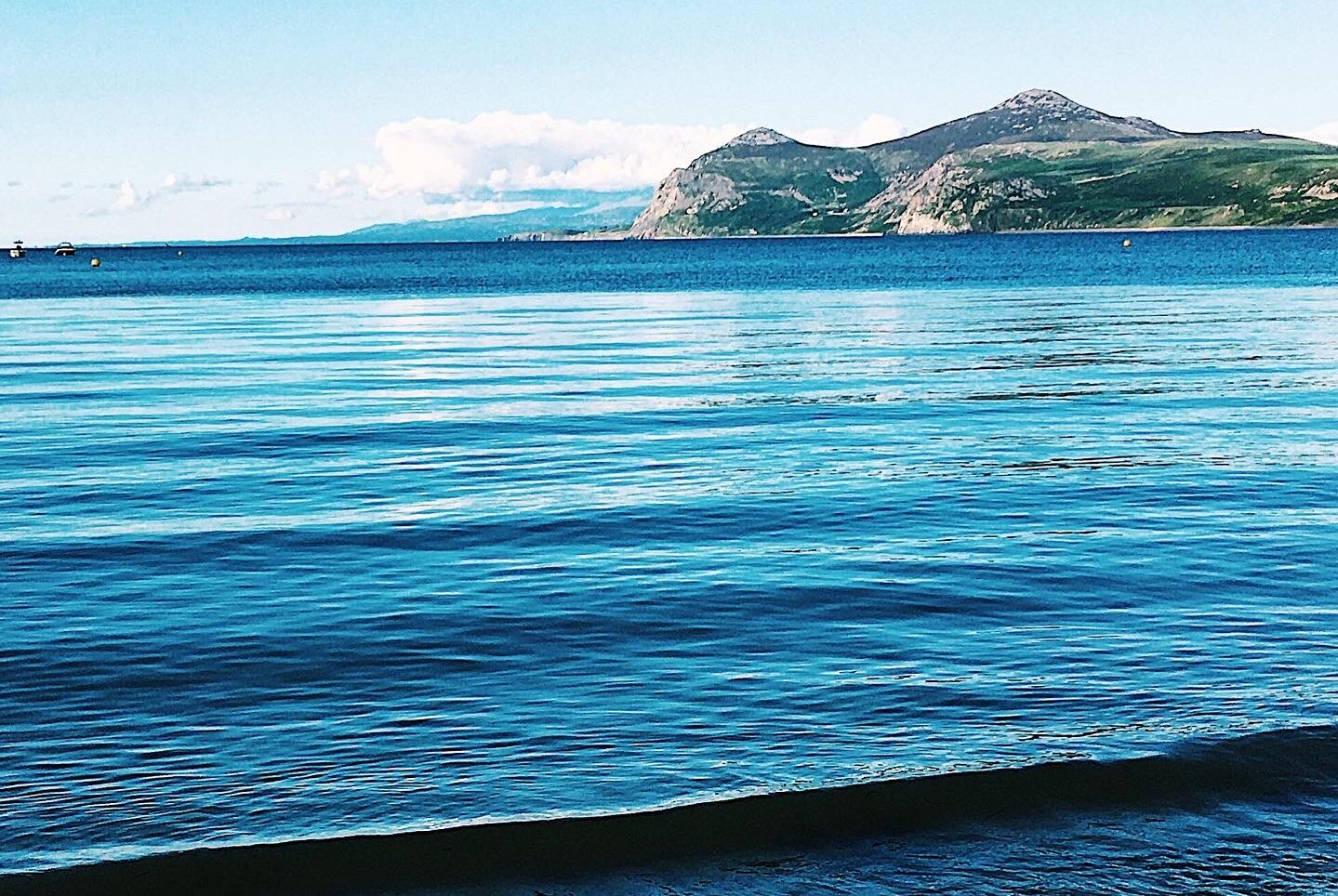
[vc_row type=”in_container” full_screen_row_position=”middle” scene_position=”center” text_color=”dark” text_align=”left” overlay_strength=”0.3″ shape_divider_position=”bottom” bg_image_animation=”none”][vc_column column_padding=”no-extra-padding” column_padding_position=”all” background_color_opacity=”1″ background_hover_color_opacity=”1″ column_link_target=”_self” column_shadow=”none” column_border_radius=”none” width=”1/1″ tablet_width_inherit=”default” tablet_text_alignment=”default” phone_text_alignment=”default” column_border_width=”none” column_border_style=”solid” bg_image_animation=”none”][vc_column_text]Ocean Literacy is defined as ‘an understanding of the ocean’s influence on us and our influence on the ocean.’ There are Seven Principles of Ocean Literacy: The Earth has one big ocean with many features. The ocean and the life in the ocean shape the features of Earth. The ocean is a major influence on weather and climate. The ocean made the Earth habitable. The ocean supports a great diversity of life and ecosystems. The ocean and humans are inextricably interconnected. The ocean is largely unexplored. According to the Marine Biological Association (MBA) these seven Ocean Literacy ‘Principles’ were developed by hundreds of educators and scientists in the USA as a guide to teaching about the Ocean. These principles are now being used as a framework in Europe to develop strategies towards the goal of an Ocean Literate society As stated by the UK’s MBA. “Few of us are aware of how important the sea is to human wellbeing: medically, economically, socially, politically and environmentally. Many of us are unaware of how day-to-day choices and actions can have a cumulative effect on the health of the ocean – a necessary resource that must be protected for life on our blue planet to exist.” The need for improved Ocean Literacy It has long been recognised that improving public awareness about how the ocean can benefit the environment, economy, and society is important (Peterson and Lubchenco 1997, Costanza, 1999). In 2004, a Pew Ocean Commission report identified a need to improve public literacy about oceans. The authors of the report assumed that by enhancing public awareness and knowledge of the oceans, and their influence on our lives, would lead to increased public support for ocean restoration efforts. The Pew Oceans Commission called for‘a new era of ocean literacy that links people to the marine environment’’ [2, p. 91]. The Commission further argues that there is a ‘‘need to provide the public with understandable information about the structure and functioning of coastal and marine ecosystems, how ecosystems affect daily lives, and how we affect ecosystems’’ [2, p. 11]. Since this report was published, low levels of ocean literacy have been, and are continuingly being identified in many countries. These low levels of literacy can be a barrier for citizens to engage in environmentally responsible behaviour or consider ocean-related careers (Guest et al., 2015). Seagrass meadows role in developing Ocean Literacy in the UK Seagrass meadows have a central role to play in developing ocean literacy in the UK. First, they are coastal habitats, readily accessible from the shore by wading or snorkelling and in some locations (i.e. Porthdinllaen in Wales, Lindisfarne National Nature Reserve in England, or Tyninghame in Scotland) they can be easily accessed without specialist equipment simply by walking out at low tide. In addition, there are already well publicised examples from the USA of where restoration of the same seagrass habitat (same species) has lead to rapid recovery of coastal ecosystem services (see Orth et al, 2020). This creates a cause of optimism that similar results could be achieved in the UK since much of the science now exists it just needs to be applied to UK waters. Finally, there are already existing, recognised and celebrated Seagrass Education and Awareness programs running in the UK both through Project Seagrass and the National Marine Aquarium’s ReMEDIES program. This is supported by an active academic literature for further developing this area (Roth and Reynolds, 2020). Conversations are already underway between Project Seagrass and the London Aquarium about a 5-year strategy that would incorporate a national seagrass engagement program and a potential collaboration with BIAZA network of aquariums which could act as community hubs for engaging people with monitoring, and then the potential restoration of their local meadows. References: Pew Oceans Commission. America’s living oceans: charting a course for sea change. A report to the nation. Arlington, VA: Pew Oceans Commission; 2003 144pp. Costanza R. The ecological, economic, and social importance of the oceans. Ecol Econ 1999;31(2):199–213. Peterson CH, Lubchenco J. Marine ecosystem services. In: Daily G, editor. Nature’s services: societal dependence on natural ecosystems. Washington, DC: Island Press; 1997177–94. Guest, H., Lotze, H.K. and Wallace, D., 2015. Youth and the sea: Ocean literacy in Nova Scotia, Canada. Marine Policy, 58, pp.98-107. https://www.mba.ac.uk/ocean-literacy Orth, R.J., Lefcheck, J.S., McGlathery, K.S., Aoki, L., Luckenbach, M.W., Moore, K.A., Oreska, M.P., Snyder, R., Wilcox, D.J. and Lusk, B., 2020. Restoration of seagrass habitat leads to rapid recovery of coastal ecosystem services. Science Advances, 6(41), p.eabc6434. Roth, J. and Reynolds, L.K., 2020. Engaging students in seagrass-focused activities. Science Activities, pp.1-10. [/vc_column_text][/vc_column][/vc_row]
Project Seagrass: A Year In Review 2018-2019
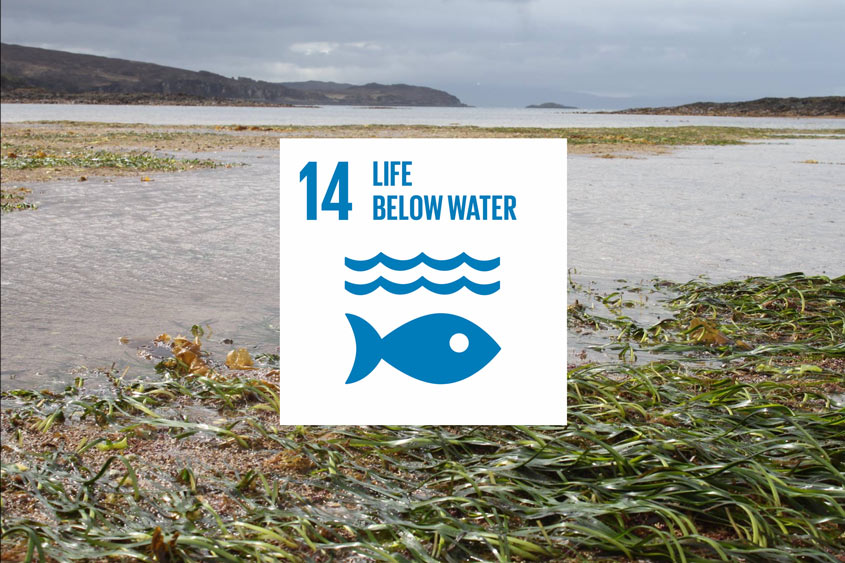
Richard Lilley Every year, as a charitable organisation, we have to write a report highlighting the previous 12 months activities. In our early days as a charity these seemed fairly straightforward, but as I sit here to write this, I find it very difficult to decided what to include. A good sign for seagrass! Anyway, this is my take on our work for the 12 months from April 2018 to March 2019. April 2018 April 2018 seems like a long time ago now, but our financials year kicked off with Laura attending “A new post-2020 biodiversity agenda – the communications challenge” at the University of Cambridge. Part of this was the Cambridge Conservation Initiative’s Panel Discussion on Setting a new post-2020 biodiversity agenda. The 2-hour lecture/interactive question and answer session focused on what scientists and the world needs to do ahead of the 2020 Beijing Biodiversity Conference (which many hope will have the same impact on biodiversity as the Paris agreement has had on climate change). May 2018 In May Richard and Leanne, in collaboration with Dr Lina Mtwana Nordlund of Stockholm University, published the first quantitative global evidence on the significant roles that seagrasses play in world fisheries. This was an timely study that made explicit the link between global fisheries production and seagrass meadows, with the paper getting some good coverage on the BBC and leading to a subsequent letter that was sent to the European Union and British Government. May was also when the Amgueddfa Genedlaethol Caerdydd (National Museum Cardiff) hosted Project Seagrass as we celebrated the ‘Year Of The Sea’ in Wales! Many seahorses, cod, cuttlefish and crabs were coloured in with Evie and Leanne manning the stands for the event. Evie and Leanne at the National Museum, Cardiff celebrating Wales “Year of the Sea” June 2018 The International Seagrass Biology Workshop series is the biennial lead event of the World Seagrass Association. In June 2018, the 13th ISBW was held in at the National University of Singapore, Singapore. “Translating Science into Action” was the overarching theme for ISBW13 (a theme I think we can all get behind), with this year’s theme motivated by the ever-important need for effective communication of seagrass science amongst scientists, managers and practitioners. Ben (who had literally just move to Stockholm to undertake his PhD at Stockholm University) joined Richard and Leanne at the Indo-Pacific Seagrass Network workshop which focussed on assessing the value of seagrass meadows for supporting livelihoods and food security across the Indo-Pacific. Benjamin Jones showing how Baited Remote Underwater Video can be used to record species abundance and diversity. We left the conference feeling that the immediate challenge is to better develop and implement science-based seagrass conservation and restoration policies and protocols that will help put new science into practice. Immediately following ISBW13 was IMCC5. The 5th International Marine Conservation Congress in Kuching, Sarawak 24-29 June, 2018 was a brilliant conference. With over 700 marine conservation professionals and students in attendance. In my opinion, IMCC is the most important international event for anyone involved in marine conservation. This year’s event was the beautiful city of Kuching in Sarawak, and the conference brought together marine conservationists from many walks of life including but not limited to marine conservation scientists, practitioners, teachers, policy makers, and journalists. As I have to pick a highlight for Project Seagrass, it would have to be our workshop at the first International Marine Kids Congress, organized and led by qualified science instructors, IMKC ran along IMCC5 and engaged 30 school-aged children (ages 7 through 14) in science education, marine biology, environmental conservation, and experiential learning! For our part we enjoyed creating a seagrass meadow (see picture) and sharing with these young minds, all of the fantastic animals that live or rely on seagrass meadows! A fantastic group of kids learning about the wonders of seagrass at IMCC5. The next IMCC event (IMCC6) is in Kiel, Germany in August 2020. So, join us all in the heart of Europe as we come together to help “Make Marine Science Matter!” July 2018 After an exceptionally busy June, the month of July was a comparatively quiet for the Project Seagrass team! That said, we recorded another great podcast with Andrew Lewin for the fantastic Speak Up For Blue. In Scotland myself and Lauren Clayton attend the ‘Round The Pier Day’ Harbour Celebrations in Ullapool for some further seagrass awareness raising activities and in England and Wales a big focus for the month was our response to the consultation on the third tranche of MCZ designations. Finally, the 29th of July was our 5th Birthday, a significant milestone for us. August 2018 Our work in August celebrates the contributions to Project Seagrass of Oliver Dalby. Oliver’s project investigated the motivations, benefits, barriers and changes in knowledge associated with taking part in seagrass citizen science projects, specifically SeagrassSpotter and Seagrass-Watch, which he followed up with a popular blog post ‘Seagrass citizen science: investigations into a potential seagrass saviour’ September 2018 Equally, in September a highlight was hearing about the work of intern Isadora Sinha. Isadora’s project concentrated on analysis of the demographics of current SeagrassSpotter users, which has never been investigated before. The demographics of users are of particular importance as we want to ensure that SeagrassSpotter is used by citizens of all ages and professions, not solely by researchers. Her work helped us to think about how best to make SeagrassSpotter accessible and known to the wider public and has led to changes in the app which are currently being implemented. Isadora wrote a blog on her Project Seagrass experience. October 2018 Beyond our annual Autumn Survey in Porthdinllaen (this time we were out at 03:30am in the snow wind and hail!) October was a relatively quiet month. We survey the seagrass meadow at Portdinllaen four times a year (Spring, Summer, Autumn and Winter) using standard Seagrass-Watch methods. November 2018 In November Richard and Leanne wrote with colleagues a challenging piece of The Conversation suggesting that Tropical marine conservation needs to change as coral reefs decline. The article highlights that with a heavy heart we are now at a marine conservation crossroads with all paths looking precarious at best. December 2018 We kicked off December with our annual advent seagrass
Spotlight on Scotland: The Sound of Jura
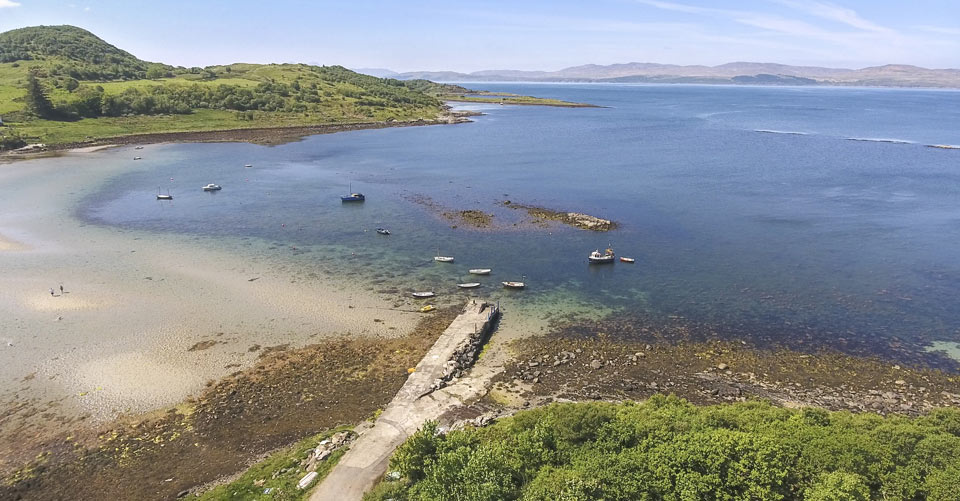
The weather in Scotland has been beautiful recently making the start of my Spring fieldwork very enjoyable – although surface water temperatures of 7 or 8℃ was a swift reminder that winter has only just left us! Last week I was very lucky to be shown around the Taynish peninsula (Loch Sween, Linne Mhuirich and the Sound of Jura) by members of the community group ‘Friends of the Sound of Jura.’ The Sound of Jura is home to some of the most fascinating and diverse marine life in Scotland and this community group seeks to protect the Sound from threats to the area’s wildlife, whilst championing the development of a local sustainable economy. The Friends of the Sound of Jura are an active member of the Coastal Communities Network, Scotland of which Project Seagrass is an Associated Organisation, and so this is not the first time I have had the pleasure of their company. The Sound of Jura and Loch Sween contain some of the most fascinating and diverse marine life in Scotland. The Loch Sunart to the Sound of Jura Marine Protected Area was established to protect the extraordinary flapper skate (Dipturus intermedia) that lives there. The Friends of the Sound of Jura are keen to point out that: “The International Union for the Conservation of Nature designates flapper skate as ‘critically endangered’, an unenviable category they share with the Sumatran rhino and mountain gorilla, meaning that the skate are among the rarest animals in the world, threatened with a high risk of extinction because of their rate of decline.” The first seagrass site we visited was Carsaig Bay (main blog photo) where there are two meadows of eelgrass (Zostera marina). The first in relatively continuous and extends broadly the width of the buoys within the bay. The second is a smaller patch which can be found towards the north of the bay. In the summer months these meadows are reportedly full of life, and I would suggest definitely worth a snorkel if it’s safe to do so – the beach is very accessible. Sandeels in Carsaig Bay seagrass meadow July 2017. Photo taken by Sound of Jura Seaweeds. The second site we visited was Linne Mhuirich. Here there are meadows of both Eelgrass (Zostera marina), and Dwarf eelgrass (Zostera noltii). The Dwarf eelgrass is especially prevalent in the small basin at the south of Linne Mhuirich and is known to play an important part in the winter diet of the whooper swan (Cygnus cygnus), the mute swan (Cygnus olor), the brent goose (Branta bernicla) and the wigeon (Anas penelope). An eelgrass meadows in Linne Mhuirich in March 2016. Photo taken by Sound of Jura Seaweeds. The final seagrass site is where the water enters/exits in the south of Linne Mhurich (where it joins Loch Sween). Here there are also eelgrass meadows around the Ulva Islands and Taynish Island. The seagrass meadow at Taynish Island in Loch Sween June 2017. Photo taken by Sound of Jura Seaweeds. Mapping our seagrass meadows is a priority for Project Seagrass in Scotland as we move towards a national celebration of our seas next year (2020 has been designated Scotland’s Year of Coasts and Waters). 2020 is a year that will spotlight, celebrate and promote opportunities to experience and enjoy our beautiful coasts and waters and at Project Seagrass we want to make sure that seagrass meadows are front and centre of that conversation – so that we can identifiy and engage with meaningful restoration work in areas where it is needed. The work of community organisations such as the Friends of the Sound of Jura are central to this effort, indeed as an organisation we couldn’t do half of what we do without the tireless efforts of individuals and communities on the ground (and in the water) who want to make a positive difference for their marine environment. So thanks again to my hosts last week for sharing their extensive Local Ecological Knowledge with me, I’ll be back to see you soon! RJ PS – YOU can help contribute to seagrass conservation by spotting seagrass in your area. Download the app at SeagrassSpotter.org
A Symphony For Scottish Seagrass
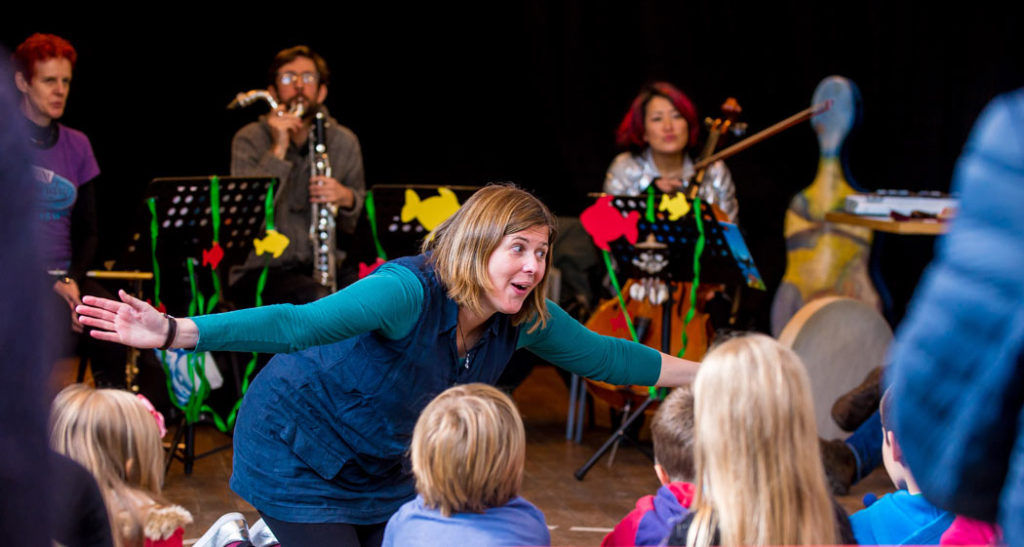
Hello Team Seagrass! I am Rufus, a volunteer with Project Seagrass and a marine biology graduate from the University of St Andrews. Since graduating in June 2017, I have begun working for the Scottish Chamber Orchestra’s Connect team and the University of St Andrews’ Music Centre. In this split position, I get to enjoy the benefits of working with extraordinary artists and musicians across the country to inspire babies, toddlers, children, students and adults to get more involved with the music in the community around them. There are so many educational opportunities provided by both the Scottish Chamber Orchestra and the University of St Andrews. Through its Connect programme, the Scottish Chamber Orchestra interacts with over 10,000 people each year through a vast array of activities. Both the staff and the musicians of the orchestra are extremely driven to reach new audiences all the time, not only to encourage interaction with music in the future but also, in some cases, to improve quality of life. There are so many educational opportunities that can be provided through music. Photo Credit – Fraser Band The Music Centre at the University St Andrews has also led some fantastic workshops throughout local schools in Fife with some of the excellent artists that come to the town to perform. One of the University’s initiatives that I have been involved in is Music Planet. This is a platform that promotes the combination of the arts with global environmental issues to enhance the power of the message that is conveyed, and also to engage new audiences. Music is a fundamental part of human culture, irrespective of where you come from or what your background is. There aren’t many people who don’t enjoy listening to some form of music, either when they are travelling, working, cooking, cleaning or as any other part of their day. I believe that because of this, music has the most potential in interdisciplinary education. Using music, and getting an audience to be involved with music and music making, will help to engage them with any subject. Music making can help children and adults to engage with any subject. Photo Credit – Fraser Band One of the easiest combinations that can be made is music and nature because, in nature, music is all around anyway. The natural soundscape has endless capabilities that can be tapped into to expand the possibilities of what you are teaching. In March, I will be co-leading a SCO workshop, with SCO violin Aisling O’Dea, for primary schools in Fife in conjunction with Project Seagrass and Music Planet from the University of St Andrews. A team of musicians from the orchestra and volunteers from Project Seagrass will provide a day workshop for pupils at primary schools centered around the children’s story, “The Snail and the Whale” by Julia Donaldson. This excellent book tells the story of a snail that seeks to see the world and journeys across the oceans on the tail of a humpback whale. In the end, it is an endearing story of community and self-worth. In March, I will be co-leading a SCO workshop, with SCO violin Aisling O’Dea, for primary schools in Fife in conjunction with Project Seagrass and Music Planet from the University of St Andrews. Photo Credit – Fraser Band The day will be centered around this story’s characters and the music that was written to accompany the story. Various activities throughout the day will involve the children in the scientific background behind important environmental issues whilst providing them the opportunity to get involved with the music making themselves. At this important tipping point, the future of the planet as we know it relies on the engagement of the public all over the world. Music can help to broaden the prospects of domestic and international education campaigns to make that change. Rufus If you would like to follow more of my activity, I have recently started a personal challenge and campaign to reduce my impact on the environment – #Green18. In my attempt to complete this challenge, I will write regular blog posts to document my success and any obstacles I have encountered along the way. Follow online @ www.green18.org Facebook @ www.facebook.com/GreenEighteen/ Instagram @ www.instagram.com/_green_18/ Twitter @ www.twitter.com/_Green_18 You can find out more about the Scottish Chamber Orchestra or music in St Andrews below: Follow online: st-andrews.ac.uk/music/ sco.org.uk Like on Facebook: www.facebook.com/scottishchamberorchestra/ www.facebook.com/UniversityofStAndrewsMusicCentre/ Follow on Twitter: @SCOmusic @StAndrewsMusic
Blue Planet, Green Seas. What’s the take home message?
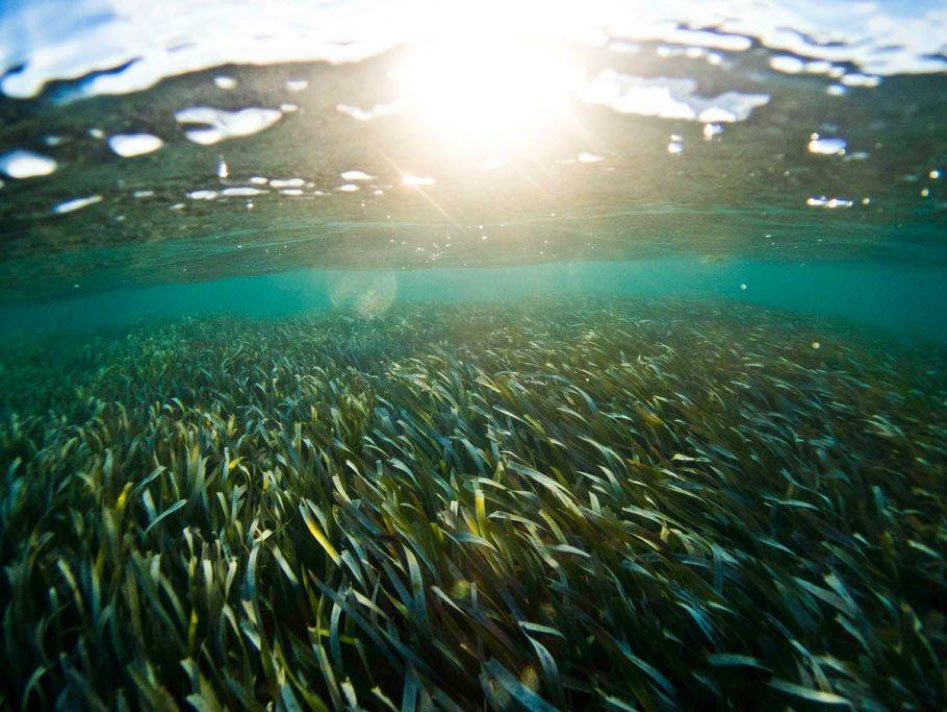
This weekend we are in for a treat as the BBC Blue Planet team broadcast episode 5 “Green Seas” for the first time (Sunday 26th November, BBC One, 8pm – don’t miss it!). The episode will reveal amazing footage of charismatic animals such as the Weedy Sea Dragon, the Green Sea Turtle and the Tiger Shark. These are just a few of the enigmatic species we associate with seagrass meadows, and all of these species are showcased in this episode! It’s now been over a year since we hosted the 12th International Seagrass Biology Workshop in Wales and it got me thinking about how far we’ve come with raising the profile of seagrass meadows… but just how far we’ve yet to go… and what we should be the ‘take home’ messages we are aiming to communicate ahead of the 13th International Seagrass Biology Workshop in Singapore next year? I love to read the new science which seems to be being generated almost weekly at the moment by #TeamSeagrass! Personally, I am back in a secondary school classroom these days, and so don’t have the time I used too, but if I had the capacity to go, I would certainly have been at CERF 2017 this month which is took place in Providence, Rhode Island. From my perspective both CERF 2015 in Portland, Oregon and CERF 2013 in San Diego, California were excellent conferences. They were particularly good for catching up with colleagues from around the world and getting a sneak peek into seagrass science coming hot off the press. If you are not already, I’d get following @CERFScience on Twitter ahead of CERF 2019 in Mobile, Alabama. This month we also witnessed the big UN Climate Change Conference “COP23” in Bonn, Germany. This conference marks the next step for governments to implement the Paris Climate Change Agreement and accelerate the transformation to sustainable, resilient and climate-safe development. The Climate Conference was reported as a ‘Launch-pad for higher ambition’ but as with all international agreements, it’s a case of walking the walk, not just talking the talk. Finally, next Monday I’ll be attending The World Forum on Natural Capital hosted by the Scottish Wildlife Trust in Edinburgh. Early this year I wrote a guest blog for the trust which explains the importance of seagrass habitat, and how people can help by submitting records through Seagrass Spotter. I also wrote another guest blog for ScotLINK which focussed on the value of seagrass meadows as Natural Capital. All this activity has got me thinking once again about how we best communicate seagrass meadows. At Project Seagrass we’ve tried a variety of educational tools, including colouring in books, nursery rhymes, school workshops and videos to name just a few. However, as I’m now back in the classroom and teaching young biology students (11-18 years old), I have had to re-evaluate some of the language I’ve got accustomed to using on a day to day basis, especially amongst my academic colleagues. I’m essentially stripping seagrass science back to the VERY basics. For several years now my ‘elevator pitch’ for seagrass has been based around 3 topics; 1) Fisheries and Food Security (seagrass meadows are a nursery habitat for many important food fish species) 2) Blue Carbon (seagrass meadows are a mega carbon sink) 3) Green Barriers (seagrass meadows protect our coastlines from wave energy). But how do you pitch that to an 11-year-old? And is that what I should be focussing on? Learning to communicate seagrass science at every level is something that we should all aim to improve in, but I also think it’s especially important for us to all be ‘singing from the same hymn sheet’. If the first challenge was in getting seagrass as a ‘thing’ into the public consciousness, the next step is surely explaining why it is so damn important! Learning to communicate these three concepts is my current seagrass science communication challenge and so if anyone has got any ideas or resources to help with this, then I’m all ears! Cheers RJ
Festivals of Seagrass: Cause for Ocean Optimism!
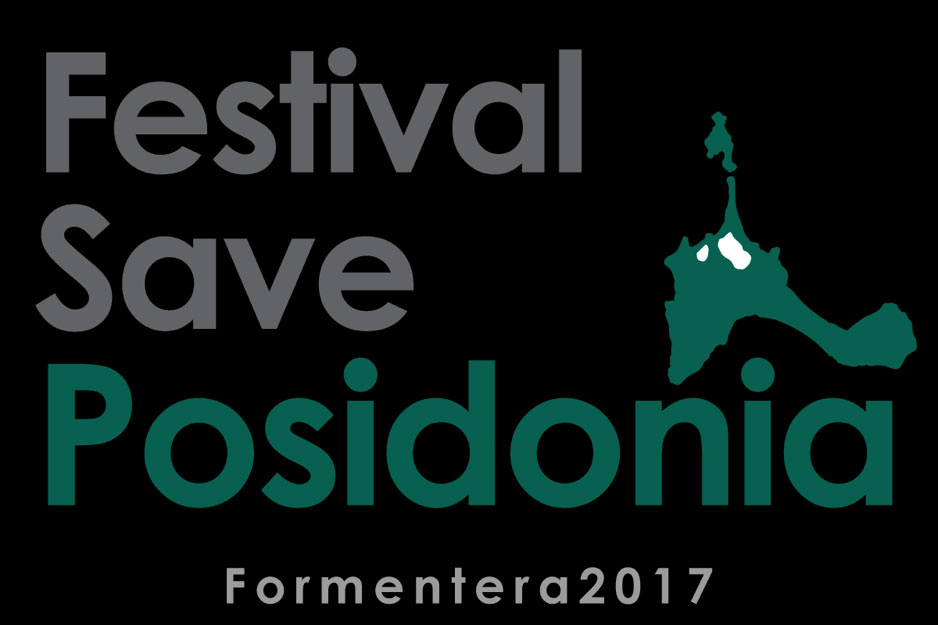
Over the next few days the Save Posidonia Project, Formentera celebrates the Save Posidonia Festival. The idea behind the project is to host a festival where culture, sport and environmental activities will be carried out that celebrate the fantastic contribution that the seagrass Posidonia oceanica makes to Mediterranean well-being. The festival is aimed both at marine professionals, as well as the public, and hopes to champion sustainability, so that it is not just an act or one off event, but becomes a permanent way of being. Outputs from the festival are concrete, with the most innovative scientific and environmental projects presented at the festival (linked to the preservation of Posidonia oceanica) having the opportunity to be financed through a collection made during by Save Posidonia Project. The projects are to be evaluated by a technical committee of high national and international recognition and the objective is to involve all individuals, companies and national or international organisations in raising awareness to take action in the conservation of such a critical ecosystem to the Balearic Islands. To participate in the festival all events must apply sustainability measures based on basic principles. Before the celebration of the event the promoters featured had to submit a plan to reduce the impact on the environment and respect the well-being of local people. However, this isn’t the first festival of this kind, indeed the Posidonia Festival has been active in the Mediterranean for nearly 10 years. Originating in 2008 on the island of Formentera (Spain), the festival has been hosted fifteen times in six different locations (Carloforte, Formentera, Mallorca, Santa Margherita Ligure, Sitges, Tavolara). Most recently Posidonia Festival was held in Mallorca with Three days of activities on Art, Nature and Sustainable Tourism have been held in Palma and Deià. The event will be held again next year. As an International Ecofestival of Art, Environment and Sustainable Development. The festival is a space for dissemination of knowledge and practices that promote the protection of the natural coastal environment and, at the same time, an opportunity for sustainable development, culture and tourism. For us seeing these ‘festivals of seagrass’ taking place is incredibly positive, since it is through platforms such as this that we are able to communicate seagrass science to the public! We’ve already heard this year about how seagrass science is growing, and I have witnessed first-hand the dedication and enthusiasm of this small (but growing!) group of seagrass scientists during the 12th International Seagrass Biology Workshop that Project Seagrass hosted in north Wales last year. Also, for me personally, I am thrilled to see the spotlight on the seagrass Posidonia oceanica since this species is critical to the sustainable provision of seafood in the Greek islands where I have made many friends. I find it deeply upsetting to witness the ecological, social and economic ramifications of degraded Posidonia oceanica meadows. The species has been estimated to be worth €190 million per year to Mediterranean fishing and the loss of this foundation species could result in both a loss of income and food security that these islands have long enjoyed. Keep up the good work #TeamSeagrass and together we will be the change.
Round The Pier Day. A weekend with Scottish Wildlife Trusts in the Wester Ross Marine Protected Area.
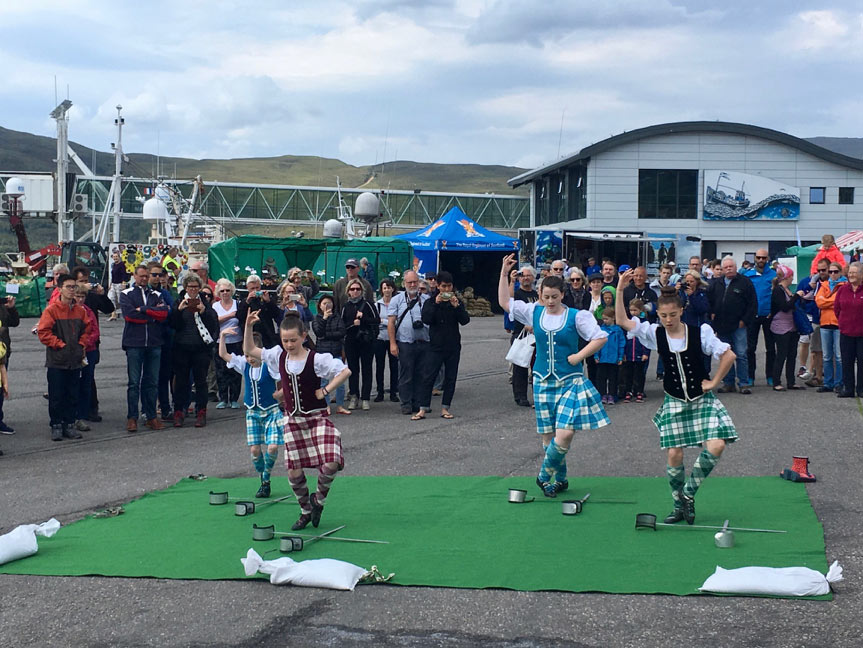
Last weekend on July 22nd, Ullapool Rotary Club put on yet another wonderful “Round The Pier Day” and Project Seagrass were invited by the Scottish Wildlife Trusts, who, thanks to Ullapool Harbour Trust and staff, have been featuring a ‘Wildlife Marquee’ as be part of the day. We were thus able to join Hebridean Whale and Dolphin Trust (HWDT), Whale and Dolphin Conservation (WDC), Marine Conservation Society (MCSUK), RSPB Scotland and Capturing our Coast in the Wildlife Marquee. It was a super day with 1728 visitors coming onto the Pier to enjoy the festivities throughout the day! In Scotland Project Seagrass have been working alongside Scottish Wildlife Trusts to raise awareness of Eelgrass (Zostera marina) which is one of the trusts ‘priority species’. In April 2016 it was hoped that our move to Scotland would herald ‘A New Dawn For Scottish Seagrass’ and we spoke then of our ambition to engage with Scotland’s coastal communities and begin the much needed process of mapping Scotland’s seagrass meadows. Community events such as this are the ‘bread and butter’ of that vision. They are also some of the best craic you can have! Our ambition for ‘Seagrass meadows to be saved around Scottish coasts’ has to start with people, and raising awareness of this most productive of coastal ecosystems. Having the opportunity to talk with folk about what seagrass is, where it is found and how we can map it is central to our strategy of raising awareness amongst the public. The Scottish Wildlife Trusts ‘Wildlife Marquee’ was a fantastic platform for engaging with people both from the local community, and those visiting the area. On a personal note it was brilliant to see the ‘Have You Got The Bottle?’ campaign present in the tent. The organisation is campaigning for a Scottish Deposit Return System for drinks packaging (Basically you would pay a small deposit when you buy cans and bottles and get it back when they are returned. Easy.) As someone who wants to reduce litter entering our marine ecosystems then this seems to me like a super solution to a huge problem! Anyways, back to the seagrass! When we arrived in Scotland we wanted develop and network of like minded individuals who could help volunteer their time and energy towards our common goal. This is the Scottish Seagrass Network. This weekend SJ (of the “ThreeBeforeThirty” blog posts) and Lauren (our West of Scotland rep) joined me in Ullapool to help deliver the SEA education (Seagrass, Education and Awareness) on the Saturday and explore the Marine Protected Area on the Sunday. By land and by sea the Wester Ross Marine Protected Area is simply stunning! First, we explored Loch Broom and the Summer Isles (towards the North-East of the MPA) and then afterwards Little Loch Broom, Gruinard Bay and Loch Ewe (towards the centre and South-West of the MPA). In Gruinard Bay there is a known seagrass meadow which forms part of the Scottish Wildlife Trusts North-West Highlands Snorkel Trail which has nine sites along the north west highlands coast around Ullapool, and recently a further six sites on the Isle of Harris. The Summer Isles are home to seals, seabirds and the majestic White-tailed eagle. If anyone is interested in assisting Project Seagrass in mapping the extent of seagrass distribution around these trails then please upload your photos via our Seagrass Spotter app and if you would like to find out more information about Scotland’s Seagrass Meadows then check out the Scottish Wildlife Trusts website. Slàinte RJ
Year FOUR of Project Seagrass!
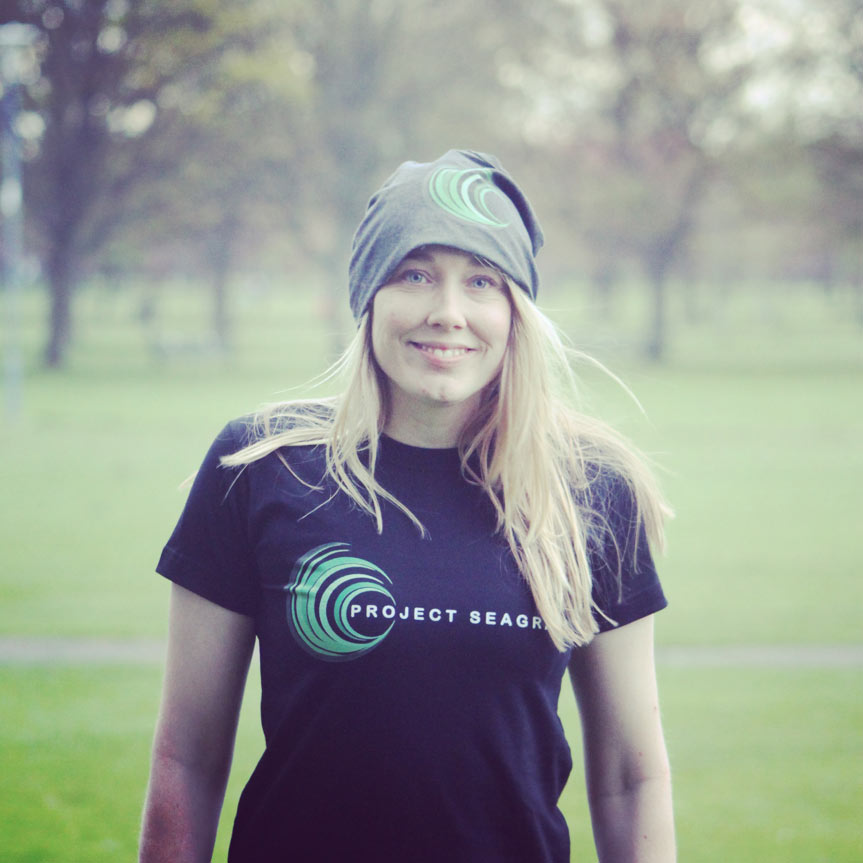
So that’s 4 years, 1460 days, 35,040 hours, 2,120,400 minutes or 12,614,400 seconds of seagrass! 2016/2017 has been our biggest 12 months to date, with our hosting of the 12th International Seagrass Biology Workshop at Nant Gwrtheyrn the obvious highlight. But that’s not all we’ve been up to this year. Since our ‘3 years of Project Seagrass’ blog last July, we’ve enjoyed making marine science matter at IMCC4 last August, right up to outreach at Ullapool Pier Day (blog to follow) just this last week. This blog is thus a celebration, and a review, of our 4th year as an officially seagrass focused entity! 2016 August So first up, and in a break from our usual seagrass focus, myself and Edd Hind-Ozan were involved in an innovative project with “Oceans Online” at IMCC4. The idea was to run a workshop which focussed on “Bringing fishermen to the table” at academic conferences. The aim was to achieve this using live stream “Bambuser” technology. Whilst this is a simple concept, I believe it is one that is long overdue. At marine conservation focused conferences and workshops, the importance of stakeholders is discussed frequently, whether it’s from developing solutions for community led MPA’s or improving fishing quotas – but the stakeholders are all to frequently absent from these high-level discussions. Oceans Online marked a pretty important development in making conferences accessible to all, especially considering a lot of commercial fishermen (from both developed and developing countries) cannot attend conferences because they are fishing! It was a privilege to be part of the beginning of a movement that looks to cultivate the ways marine science is conducted, shared and communicated online. Oceans Online will be returning on the 29th June 2018 for IMCC5 in Malaysia – so save the date! Next up in August was the development of Scottish Seagrass Network and the official registration of Project Seagrass as a charitable entity in Scotland. As we entered our fourth year as an NGO, we thought this was a logical step for us, especially since within north-west Europe, approximately 20% of seagrass meadows are found within Scottish waters. Within north-west Europe roughly 1/5th of seagrass meadows are found in Scottish waters. September In September myself and SJ managed to get over to the Scottish Association for Marine Science (SAMS) in Oban for some ‘Seagrass Spotter’ citizen science. The site we went seagrass spotting was Dunstaffnage Bay at the entrance to Loch Etive on the West Coast of Scotland. Beyond the eelgrass meadow already known to SAMS there was not much to report. Meanwhile, in Swansea, Wales the team from HQ in Cardiff were busy running a Seagrass Education and Awareness stand at the British Science Festival. The festival’s began in 1831 in York, England and have run through to this festival in Swansea which marked the 177th meeting of the British Science Association. Project Seagrass at the British Science Festival in Swansea, Wales. October This month was clearly ‘the big one’ in our calendar, and what a brilliant event the 12th International Seagrass Biology Workshop turned out to be. Our intern Evelyn Furness remarked on just how friendly “Team Seagrass” turned out to be and I think all delegates were impressed at both the diversity and quality of seagrass science that is now taking place globally. I’m sure that ISBW13 in Singapore will be an absolute cracker of a conference! The 12th International Seagrass Biology Workshop was held at Nant Gwrtheyrn, Wales. November You’d be forgiven for thinking that November would be a prime opportunity to take our foot off the gas after the efforts that went into hosting ISBW12, but conversely, we were really keen to build on the momentum and enthusiasm generated at ISBW12, especially the passion shown for our smartphone app Seagrass Spotter. For this reason, we put all our efforts this month into ensuring that Seagrass Spotter was developed and enhanced from being a smartphone application that was only available in the British Isles, to one that was functional across Europe, and in particular, that it be made accessible to as many delegates as possible from across the Mediterranean region. Seagrass spotter was made available to users in the Mediterranean Sea November was also the month that SJ announced she would be running “Three marathons before I turn 30” in a bid to raise vital funds for Project Seagrass. December Building on our traditional Christmas advent calendar, this year we created a “virtual” calendar for you all to enjoy. Behind each door of our calendar is one of #SantasSeagrassSecrets introducing you to the weird and wonderful uses and functions of seagrasses across the world. 2017 January The new year started with a reason to celebrate! Participation in SeagrassSpotter had rocketed since its expansion and we now had over 400 seagrass sightings from across the North Atlantic Ocean and Mediterranean Sea! What’s more, we had the good news that Andrew Lewin was keen to support Team Seagrass on his Speak Up For Blue website, with each of the plenaries from ISBW12 to be shared from his website. The first of these was Ocean Optimism on the Future of Seagrass Meadows on January 3rd but he continued to share one plenary / blog combo through until March (Check them out at www.speakupforblue.com). Each January I also take the time to head down to the BETT show as I seek inspiration for the best ways for us to improve on our SEA (Seagrass, Education and Awareness) programme. Towards the end of the month, Ben attended a meeting in Bangkok, Thailand, to discuss the final developments to “The Dugong & Seagrass Research Toolkit”, which we’ll discuss later. Richard headed to Puerto Rico, where he led the Swansea University Tropical Marine Ecology field course. Here he used the opportunity to test the capabilities of Seagrass Spotter in a tropical environment and paved the way for scientific seagrass spotting by conducting the activity along transects. February In February we were out and about in Cardiff talking all things seagrass at Cardiff University’s “Speak Week” March March is Seagrass Awareness Month and so a busy time of year for anyone involved in seagrass science and communication! This month Ben headed to Mexico as part of a ‘Land 2 Coast’ project with Cardiff University. Here
One marathon down… Two to go! Next stop Edinburgh!
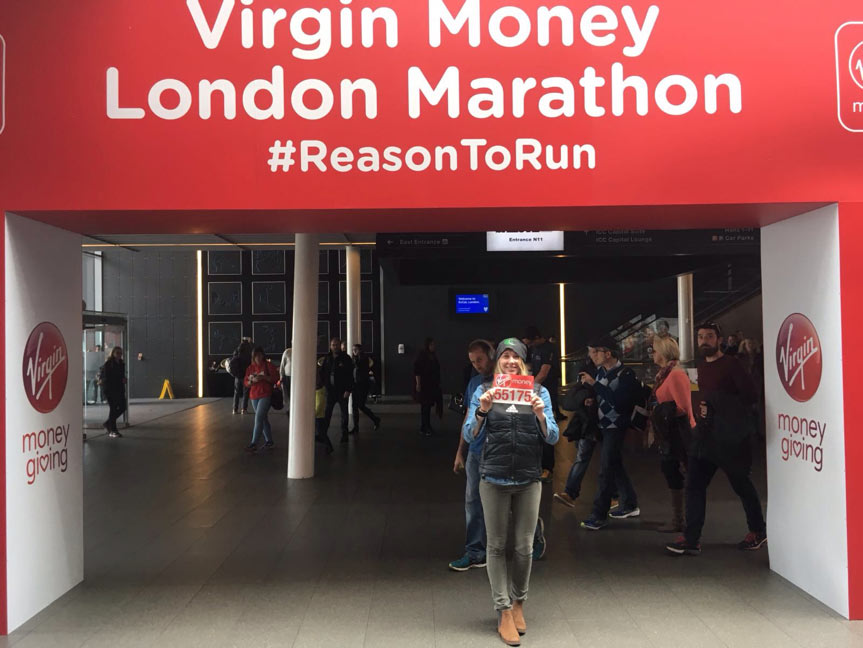
Well, Sunday 23rd April came and went and… I DID IT! All those long runs, early mornings and late evenings were worth it. All that snow, rain and sleet…All in the name of Project Seagrass – my #ReasonToRun! There was a good buzz about the London Marathon. I completed the London Marathon in a time of 4hrs and 2 minutes. I’m so relieved to have made it round in one piece… I really can’t believe I’ve ran my first marathon after all these months of training! I just want to thank everyone who has sponsored me so far! http/uk.virginmoneygiving.com/SJPopester However, it’s not over yet! My personal nemesis is my home marathon, and the one that I am most looking forward to doing! I trained for Edinburgh in 2012 and was on the final big 22-mile run when I tripped over a root of a tree and injured my IT band. Devastated. The Edinburgh Marathon (28th May) is now just a little under 3 weeks away and so there has been a nice gap between the first two marathons. It’s allowed me to take a break and recover, and join Director RJ on a little seagrass hunt around the Scottish West Coast. The Scottish Coast is incredible.The waters are crystal clear which is perfect for seagrass spotting! However, I think the real challenge for me now is not just completing the Edinburgh Marathon, but will be in recovering from Edinburgh and getting ready for the Stockholm Marathon (June 3rd) just a week later! This is going to be especially difficult since I am flying back to Edinburgh after the marathon on Saturday so I can help run the Tour de Forth event taking place on Sunday 4th June! Busy busy! I don’t want to look too far ahead but I am excited about the ‘Grand Finale’ in Stockholm. It means I will have overcome Edinburgh and have completed my #ThreeBeforeThirty challenge! Until then, I guess I have a few more pavements to pound! If there is a city to rival Edinburgh’s beauty, it must be Stockholm. Breathtaking. See you in Edinburgh! SJ x PS – You can keep me motivated here: http://uk.virginmoneygiving.com/SJPopester If anyone, like SJ, has a desire to challenge themselves for charity then we are all ears! Simply contact us at info@projectseagrass.org

